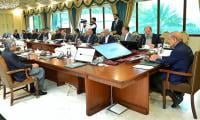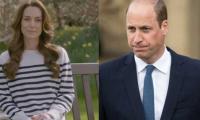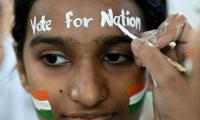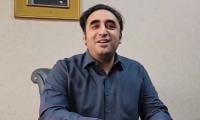ISLAMABAD: A research study conducted by Human Rights Commission of Pakistan (HRCP) has urged Pakistan Electronic Media Regulatory Authority (Pemra) to establish a journalist training institute to train media professionals on issues of safety and security and also to contribute towards Journalists Safety Fund.
The findings of the study were shared by Dr Zafarullah at a HRCP consultation on ‘Enhancing Security of Media Persons.’The study says that the Pemra charges exuberant license fees, annual renewal fee and 5-7.5 per cent of annual gross advertisement revenues as per audited accounts from Satellite televisions and FM Radios. “Pemra has recently given money and loan to the government. What if this fund can be used to betterment of journalist community?” questioned the author of the study.
The consultation was attended by media community representatives and civil society activists who held an in-depth discussion on the security and safety issues faced by the journalists around the country and suggested solutions. They said that the state is responsible for providing security to media persons and demanded the Parliament to adopt and implement Journalists Safety Bill at the earliest.
They said that media persons are facing threats from different sections of the society. “They might have differences in many other issues but both state and non state actors agree to suppress media as they consider media a threat,” said anchorperson Hamid Mir. He endorsed the demand of making security agencies answerable to Parliament.
Some criticised media houses and media persons for their policies and attitudes which they believed lead to further insecurity for journalists. “The whole society has adopted an attitude of militancy, even politicians and media persons sometime talk like war lords,” said Senator Afrasiab Khattak.
They also demanded of the government to make public the reports of the judicial commissions set up for attacks on journalists including Omer Cheema, Hamid Mir and Saleem Shahzad.
Eminent journalist, M Ziauddin said issues like safety and security must be part of the conditions for issuance of license to any media house. He stressed the role journalist community and media owners could play to protect employees. He said that competition among different media houses should not turn into rivalry.
Pakistan Federal Union Journalists (PFUJ) President Afzal Butt talked about the working conditions for media persons in Pakistan and said that it is important to first ensure the human rights of journalists which are violated every day. The participants said that the journalists are often sandwiched between the militants and the military in troubled spots like the Federally Administered Tribal Areas (Fata) and between the separatists and the security in Balochistan.
Earlier, the author of the report Barrister Zafarullah shared the basic findings of the report. He said that the Pakistan must adhere to its international commitments and obligations under the UN system and create conducive environment for freedom of expression and right to life and liberty. The report demands the government to create effective institutional structure to promote and protect fundamental freedoms. It says that the courts must serve timely justice to ensure rule of law and put a full-stop on prevailing culture of impunity.
The report suggests that professional associations must join hands to establish a training institute at the federal and provincial levels to offer trainings on issues related to the safety and security of journalists and develop SOPs (Standard Operating Procedures) for the safety of media houses.
The research suggested the government to work in collaboration with the organisations that are dedicated to the cause of safety and security of the journalists and the media houses to get an accurate picture of the problem and governmental efforts for the safety and security of journalists must be better coordination with the provinces to garner meaningful results.
The report urged provincial governments to come forward to ensure safety and security of the journalists as it is a State responsibility in the constitutional scheme of Pakistan to protect life and liberties including the freedom of expression and the press. It encourages political parties to train their workers and activists to respect the role and value of free and independent media for democratic culture in the country and refrain from singling out any media house or a particular journalist who is critical of their ideas or strategies.
The report says that Pakistan is confronted with numerous challenges pertaining to the safety and security of its citizens. More than 50,000 citizens and men in uniform have lost their lives. The research points out that the press, media, and journalists have also become the frontline sufferers and it appears that many actors of this chaos have deliberately ‘zoomed in’ on the media, primarily to dictate their narrative on these channels of communication and also to earn some oxygen of publicity for their odd cause. It says that in many instances of violence against the journalists the victims are those who are reluctant to follow ‘stereo-typical’ notions of security or are vocal critics of extremist aberrations in the society.
According to the report, the Freedom Network estimates that more than 18,000 people are formally associated with the media. The average age of journalists has slumped from about 47 in 2002 to 23. It says that killings with impunity, harassment, intimidation etc. have made Pakistan a ‘dangerous place’ for journalists and media professionals.
The Reporters without Borders has ranked Pakistan 158th among total 180 countries in terms of freedom of expression in 2015. The Committee to Protect Journalists (CPJ) annually prepares an Impunity Index to highlight whether the journalists who lost their lives got justice or not. In CPJ’s 2015 Impunity Index Pakistan ranked 8th out of the 14 countries.
The CPJ’s research on Impunity Index reveals that the suspected sources of fire on journalists included political groups (45 per cent), officials (24 per cent), criminal groups (12 per cent), mob violence (3 per cent) and unknown (18 per cent). In terms of beats covered by victims overwhelming 64 percent covered politics and conflict situations and 24 percent corruption and crime.
Majority of the victims worked for print media (48 per cent) followed by broadcast reporters and camera operators (41 percent) and photographers (9 per cent). The victims were 100 percent male and in 84 percent cases there was complete impunity and only in the case of 6 per cent what could be labelled as ‘partial justice.’
President called the Senate meeting under Article 54 of the Constitution
Crowd’s long wait due to persistent rain backed by heavy showers came to an end just for two deliveries with New...
Chief Justice Justice Faez Isa said amendments to the High Court Rules were necessary before appointment of judges
A division bench of the PHC comprising Justice SM Attique Shah and Justice Syed Arshad Ali heard the petition in which...
According to the Senate Secretariat, Gilani emphasized better coordination between the two Houses







